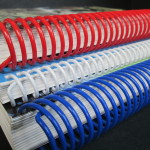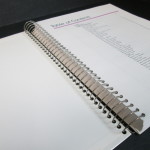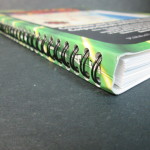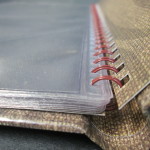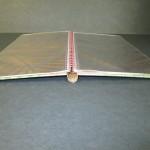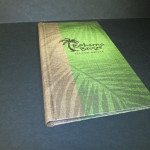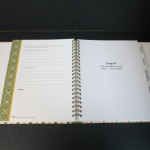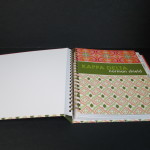All the mechanical binding methods work with loose single sheets that are punched along the binding edge and have a binding element inserted and closed to keep the sheets from falling out. We have square, round, and rectangular hole punches, along with oversized holes for thick or hard covers.
Double Loop Wire | Double Loop Wire Binding (commonly called Wire-O binding) has two loops of wire into each hole. Pages will stay in line top to bottom, as each page is turned.
Wire Spiral | Spiral Wire Binding utilizes wire coiled into the holes. There is a resulting pitch, which causes the sheets to “rise or fall” relative the adjoining sheet when turning.
Plastic Coil | Plastic Coil Binding is the same as spiral wire, only with a plastic binding element.
GBC Comb | Plastic Comb Binding uses a plastic comb with fingers that go into the holes and curve into and close in the binding edge. Many times, the spine can be imprinted by either silkscreen printing or foil stamping. Also available is a locking comb style where one finger will actually lock into the binding edge.
Casebound | Two piece hard cover or fully casebound mechanical bound book. Any of the mechanical binding elements above can be bound with a hard two-piece, one piece with an easel or fully concealed casebound cover. The most common fully concealed casebound covers are with wire-o binding. These can be made with a round back or a square back.
